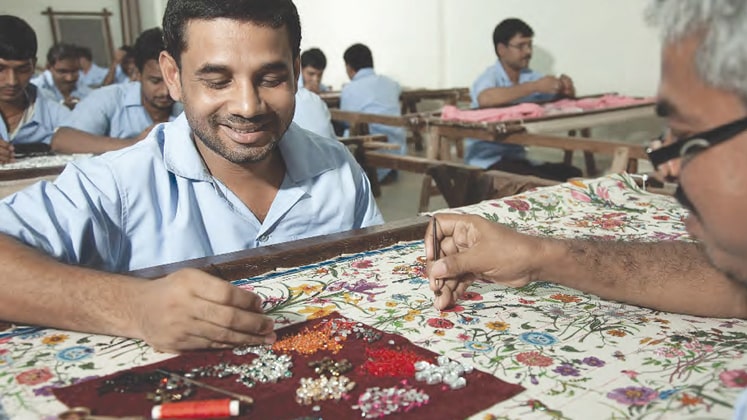Indian textiles have always been an important part of the country's cultural heritage, with a rich history and diverse range of fabrics, designs, and patterns. From handloom fabrics to block printing and embroidery, India has a wealth of textiles that are a testament to the country's rich textile tradition. In this blog post, we will be exploring the different types of textiles found in India, their origins and traditional methods of production, and their significance in Indian culture and economy.
Handloom
Handloom textiles are one of the most famous textiles found in India. These fabrics are produced by skilled artisans using traditional handlooms. Some of the most famous handloom fabrics include Banarasi silk, Kanchipuram silk, Bhagalpuri silk and Chikankari. These fabrics are known for their intricate designs and patterns and are often used in traditional Indian clothing such as sarees and lehengas. Handloom fabrics are not only an important part of India's textile tradition but also an important part of the country's economy as it provides jobs to millions of people.
Block printing
Block printing is another traditional textile art that is found in India. This method involves carving wooden blocks with intricate designs and then using them to print patterns onto fabrics. Some of the most famous block-printed fabrics include Ajrakh, Bagru, and Sanganer prints. These fabrics are known for their vibrant colors and unique patterns and are often used in traditional Indian clothing such as kurtas and dupattas.
Hand Embroidery
Embroidery is an important aspect of Indian textiles, with different regions of the country having their own unique styles. Some of the most famous embroidery styles include Zardozi from Lucknow, Phulkari from Punjab, and Kasuti from Karnataka. These styles are known for their intricate designs and patterns and are often used to decorate traditional Indian clothing such as sarees, lehengas and dupattas.
Economy
The textile industry is one of the largest employers in India, providing jobs to millions of people and also contributing significantly to the country's export revenue. This industry is not only an important source of income but also a source of pride for the country as it showcases India's rich textile tradition to the world.
In conclusion, Indian textiles are an important part of the country's cultural heritage and are renowned for their intricate designs, patterns, and craftsmanship. From handloom fabrics to block printing and embroidery, India has a diverse range of textiles that are a testament to the country's rich textile tradition. This tradition is not only an important part of the country's cultural heritage but also an important contributor to the country's economy.




Informative
ReplyDeleteThanks
Delete